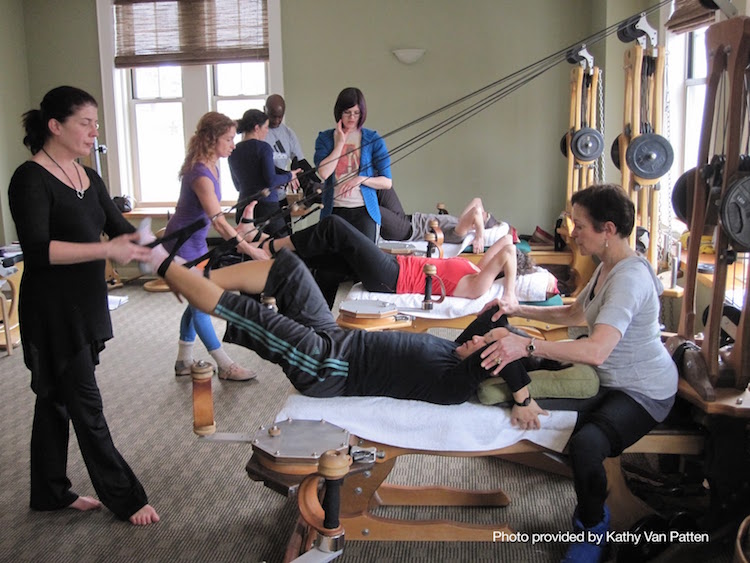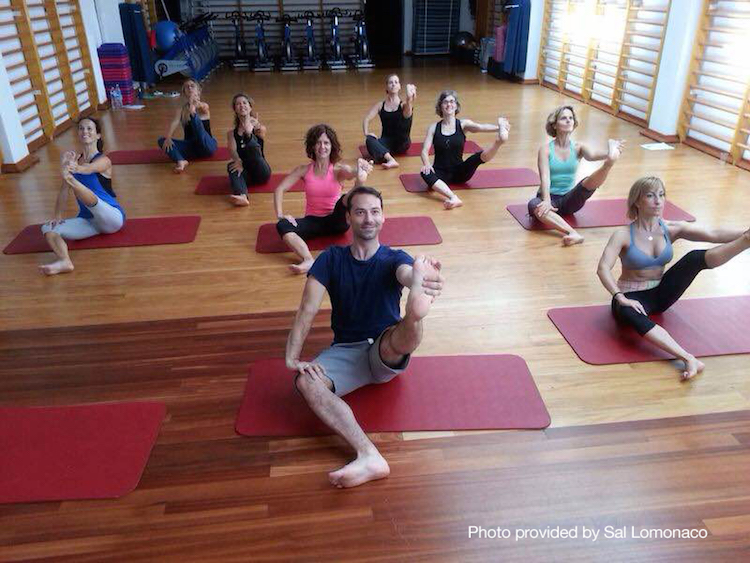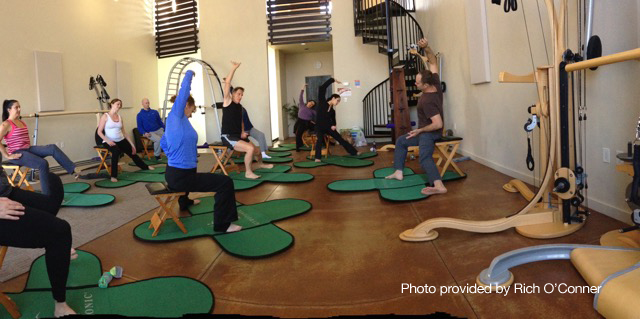Tips for Trainers, By Trainers: Teaching Group Classes
Featured Tips For Trainers // August 06, 2015
If you are an trainer of the GYROTONIC® and/or the GYROKINESIS® Methods you know that teaching a group class can be challenging, especially when you have students with varying degrees of ability.
We asked a few Gyrotonic and Gyrokinesis Master Trainers for insights on how they work in a mixed group scenario. These trainers offer us clear and easy-to-incorporate tips on how to get the most out of our students and ourselves in a group class…or any class for that matter!
Please add your own tips and insights in the comments below!

Kathy Van Patten,
GYROTONIC® and GYROKINESIS® Master Trainer
Teaching semi-private and group Gyrotonic classes is challenging and fun!
Key components to a good teacher: Compassion, intelligence, imagination, intuition, trust and knowledge. Ultimately, developing your ‘eye’ and knowing what to look for and what to do when you see it, comes with time and experience.
In order to become the best teacher you can be you need to have the desire to improve, develop your skills of observation, and follow through with each client. Being able to ‘see’ means you are able to look at the whole person in front of you: physically, mentally, and spiritually. It means you can look from a place of being ‘non-judgmental’ and accept whoever is in front of you. You may not be in agreement with their values or approach to life, but you are there as the shepherd to guide them and help them improve their ability to move.
It is not something you can make magically happen. It takes time, hard work, devotion, intuition, imagination, and intelligence and compassion!!!
Ingredients for Teaching Group Gyrotonic Classes
Appropriate cueing at the appropriate time
Being able to do ‘appropriate cueing at the appropriate time’ is crucial, and sharpening your eye will do just that. Understand where the movement initiates from and the path of energy toward its completion. A teacher’s verbal direction can take a student so far. An experienced touch can make all the difference. Cue breath to help client soften the tissues in order that the movements can flow and connect.
Timing Your Cues
Maintain a positive attitude while giving a heavy dose of praise peppered with a few ‘suggestions’ and ‘let’s add another idea to what you are doing.
“Seeing is to movement what listening is to music. It is not enough to hear, you must listen. It is not enough to look, you must see,” – author unknown.
The teaching formula for teaching groups is comprised of the same ingredients/elements for teaching a private or a duet:
- Technique with precision
- Fluidity with transitions
- Musicality
- Rhythm
- Breath
Effective teachers rely on the following to keep students challenged, inspired and moving:
- Intuition
- Imagination
- Intelligence
- Experience
- Energy
- Voice
It’s important to connect to each client/student and for the clients in the class to respect and connect with each other.

Sal Lomonaco
GYROTONIC® Trainer and GYROKINESIS® Master Trainer
Teaching a group of newbie people can be no mean feat. Teaching them the choreography, teaching rhythm and breath work whilst staying true to the method but at the same time making them feel something so the clients keep coming back.
I’ve made plenty of mistakes from when I started out but I always refined what didn’t work to create a simple formula that got my classes full.
Tip #1 – The Layman Terms
The last thing busy stressed out people need is the teacher giving a running commentary on everything technical and anatomical and correcting the joy out of it.
When you explain something: It needs to be summarized in a short sentence that is clear and using simple layman language.
Use a simple image that’s powerful enough that everyone in the room can get it straight away.
Tip #2 – Theme: What is the theme of your class?
In every class most people come from something stressful and hectic and for the time they are in class they want to be moved. Theming the class is a really simple way to focus on one thing and carry it through the entire class. E.g.- vision guiding the movement, intention, the inhale or the exhale, the tempo, the rhythm.
Focusing on too many things can overwhelm the client and the teacher and it becomes meaningless cues and difficult for the client to grasp
Tip #3 – Cueing
Layer cues:
- show the movement
- add the breathing
- set the rhythm
Rinse and repeat to create a fluid class.
Tip #4 – Fun Factor
Have some personality in your class so the classes are personable and so that you look like you’re enjoying it. People are drawn to people who look happy and are the life and sole of the party, so relax, let go and teach people to have fun in class.

Rich O’Conner
GYROTONIC® and GYROKINESIS® Master Trainer
Owner, GYROTONIC® Albuquerque
Tips for teaching group class:
1. In a class the teacher is the guide. There is no need to explain everything and over explain the movement. Allow the students to move, breath, and experience for themselves.
This can be challenging with newer students, but encourage them to trust their bodies and explore the movement.
2. “Teaching is a privilege and never a burden,” -author Unknown.
We all have bad days but the class should immediately know that there is no where else their teacher would rather be and nothing else he/she would rather be doing at this moment. Enthusiasm for the work is probably the most important attribute a teacher can possess! If you’re a new teacher and not quite as confident – be enthusiastic and passionate and no one will ever care!

Julie Toren
GYROTONIC® Master Trainer, GYROKINESIS® Pre-Trainer
Owner, Body Mind Balance in Cincinnati, OH
Build Relationships
All of the exercises in the Gyrotonic Method can be related to other exercises somewhere else in the Method. Help your clients see this, too. For example: the Spiral with Crossover from the Spinal Motions series shows up again and again in different exercises (such as Slalom). Building upon these relationships helps to clarify technique and brings efficiency to your teaching.
Place Strategically
Place more experienced clients in the front or on the end (to the right is best). This will help provide visuals for clients who are still learning details at times when your teaching is more focused on verbal and hands on cues.
Give Responsibility
Teaching clients the names of the exercises, their equipment setup (and why), not only helps the session run efficiently, it also builds confidence and ownership of their workout and its benefits.
Support Awareness
Group sessions give the opportunity to play with rhythms and move with different energy. By finding the average pace of the group (and the teacher) it calms the faster movers and energizes those that need to pick up the pace.
Narrate Touch
When using hands-on on one person that are applicable to the group narrate what you are doing. This is helpful to do on the end of the row as the others can see you (eg. far right client if moving to the right in a sitting exercise).
————————–
Cina Canada is a GYROTONIC® Trainer and the Media Coordinator for GYROTONIC® International Headquarters.
